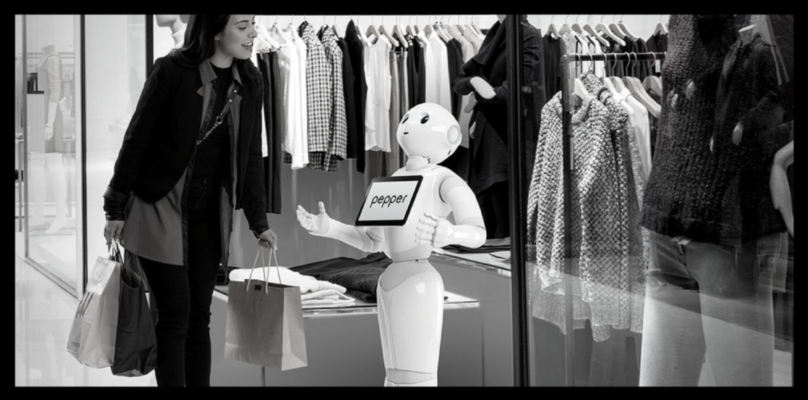How AI Is Changing The Online Retail Industry

Artificial Intelligence is the next big thing in tech, however it’s already all around us; from the news you see on social media, to Alexa and Siri. It wasn’t going to be long until retailers sunk their teeth into this new tool and trend. Retailers have been following the same steps in recent years, with enhanced websites being made more user friendly and attractive, to easier access to payment methods and now they’re focusing on AI. The online retail organisations that aren’t getting on board with this from the on-set, will be playing catch-up over the next few years, that’s for sure!
But how will this new technology change the face of retail and e-commerce?
According to Gartner, by 2020, 85 percent of customer interactions in retail will be managed by AI. And 62 percent of UK millennials state that they would appreciate a brand or retailer using AI technology. As AI becomes more sophisticated, it will not only enhance shopping experience, but be a great tool for sales. With AI techniques that are already making an impact in other industries, they can be used by the retail sector to streamline processes and make the user’s online experience into something similar to speaking with a salesperson in a physical shop.
Deep Learning
For example, deep learning, is one of the pillars of success for AI so far. Deep learning has been used in retail in areas such as classifying images: i.e Pinterest’s visual search. CamFind has also used it by allowing users to take pictures of things they see and uploading it to make the picture shoppable. You see something you like, you take a picture, upload it and you’re given similar options or the same pair to purchase.
Pictures aren’t the only way AI can help though. In the last decade, user experience has stayed the same and so have the conversion rates, more or less. Users are the ones that have to come up with the right search terms and are tasked with scrolling through pages upon pages of stock. Up to now, augmenting key word search with natural language hasn’t had much of an impact due to shopping being a very visual process for buyers.
However, by using deep learning and auto-encoding features of images by similarities and differences, it can enhance a model of what is available. This model is very close to how humans perceive items, but it wouldn’t be enough, retailers would need to find a way to understand preferences and the way they interact with inventory.
Content Optimization
Content optimization will soon be applied to the online retail industry as well. This technique is usually done through trial and error. Optimising content online has various factors to take into account. Everything from messaging options, ordering pages, layouts of pages and font size are to be explored. It’s a fact that even the slightest changes can drive revenue, or lose it completely.
To help drive this online optimisation, evolutionary algorithms are key. These EAs configure online content by being given image options, page layout options, etc. which then transforms and combines itself into the best metrics to bring success. The EA is transforming continuously, with every shopper and user inputting data that makes the algorithm tweak itself. It evolves solely by changing user patterns.
Chatbots
Chatbots are becoming the norm across the retail industry. If done right, they make the customer experience more pleasant for the user adapting to their needs and at the same time promoting the brand.
Online Learning
Online learning, is another AI technique which could be of use in the retail industry. Online learning is when sites can analyse clicks through online listings in real-time. This leads to understanding customer preferences and is able to create a shopping experience that is personalised to them. Factors that are non-visual such as size, price and match also need to be taken into account.
This personalised shopping experience can start from the landing page. Analysing purchase history, view history, clicks and products added to their wishlist/cart, companies will be able to predict likes and dislikes.
AI techniques are all about real-time personalisation. When retailers master using AI to adapt individual shopper’s preferences and styles it will be the answer that starts bringing in a lot of revenue. It will have positive aspects for both the customer and the retailer, making the process of shopping easier, friendlier and more targeted.
Interested in finding out more? Find out the difference between Artificial Intelligence vs Machine Learning
Are you looking for a new role in the Dynamics 365 or Salesforce markets? Click here to see our live vacancies.
